By Esha Chaudhuri
Run by the Don Bosco Society, the iconic hexagonal edifice of the Don Bosco Centre for Indigenous Cultures (DBCIC) situated in Mawlai, celebrates cultural communion of the tribes in the northeast. From laying the foundational stone in 1994, collecting artefacts and setting up the gallery, to opening the space to visitors in 2004, DBCIC encapsulates the enriching cultural heritage of the tribes of Northeast India to perfection. With 22 alcoves at 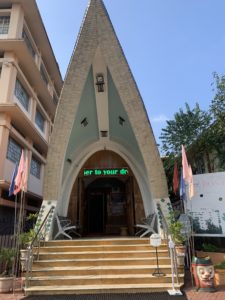 the entrance and comprising seven floors, the 56,000 square feet museum is the largest cultural museum in the Northeast India.
the entrance and comprising seven floors, the 56,000 square feet museum is the largest cultural museum in the Northeast India.
Ascending each floor from ground zero of the basement right up to the seventh floor, the floor space is organised thematically for the visual appeal and in-depth understanding of its visitors with ease. It begins with the Neighbours Gallery, showcasing countries surrounding the Northeast India – namely, Nepal, China, Bhutan, Myanmar and Bangladesh and the cultural extension to them all. Displaying 22 different alcoves representational of the traditional attires of different genders intriguing visitors at the outset. These alcoves set the tone of the museum collection by foregrounding the varied attires of the tribal men and women in their natural habitat.
A celebration of land and its people
Traversing through traditional socio-economic aspects of the tribal communities, the agricultural backgrounds of each tribe is explained and captured well, through their practices of wet cultivation, jhum and terrace cultivation. The exhibitions depicting the same, encapsulates the practices from times immemorial.
Among other life skills, fishing, hunting and gathering being one of them, the section in the gallery highlights a number of creative tools. A tenet of all tribes, apart from agricultural practices, the skills of basketry and craftsmanship is also given due weightage in the display. Even though not a full-time occupation, basketry was developed among the Nagas and the Khasis. Its uses varied as they were categorised into carrying baskets, storage baskets, receptacles, sieves, decorative baskets and some for fishing, too. Apart from domestic uses, they were also used for personal adornment, dressing and defence in the form of headgears in 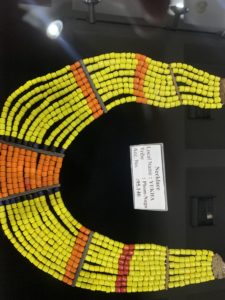 different shapes and sizes, often worn as rain shields.
different shapes and sizes, often worn as rain shields.
A vital aspect of all tribal communities is the instincts for survival and the techniques involved in achieving that. Traditionally, using age-old weaponry in the form of small and long knives were widely employed. The DBCIC pamphlet, drawing attention to this section humourously quotes “we are happy that there are only few!”
The gallery also provides a glimpse of the terrain and people’s houses in the region varying from one tribe to another. Displaying miniatures of the housing styles, perfected over a period of time, made to suit the aesthetics, climate, the functional and sociological needs of the people. The structures were made conducive for a sustainable living made of wood, bamboo, cane, reed, thatch and mud. Some of the housing styles showcased were the Konyak, Chakhesang Naga, traditional Assam-type homes, and Halam village house. These were typically built on hill or mountain tops, made to endure the ravages of nature.
Based on the rich natural resources available in the region, the indigenous communities used both tapped and untapped ones which are exhibited in the gallery section through the categories of forest, water, mineral and soil across the states of Northeast India.
Exploring facets of lifestyle, the floor showcasing the costumes and ornaments opens a window to myriad ethnic skills with regard to the weaves, stitch and the array of clothing textiles. Some of the styles in display to be named are Nishi, Tangsa, Nocte, Dimasa and Mishing. The ornaments too, made of different ores and beads in the form of necklaces, 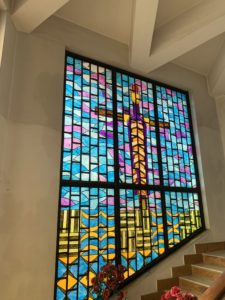 earrings, bangles, chokers – most of them chunky and colourful, signifying an elated way of being in the social strata.
earrings, bangles, chokers – most of them chunky and colourful, signifying an elated way of being in the social strata.
Extending this to section is the religious and living customs of the people, displayed distinctively for each tribe. For example, a depiction of the hynniew tree hynniew skum – a belief of the Khasis that God created seven families to reside on earth symbolised by gold, rice, limestone, coal, medicinal herbs, bamboo, yam and beetle nuts. The spiritual heritage of language, music, ethics, herbal healers, matrilineal ancestry, and sacred groves. Citing aspects of the Khasi DNA make of over 70,000 years, the segment makes for an interesting piece of trivia for all curious minds.
From a first time visitor’s point of view, the most attractive corner in the museum is the skywalk on the topmost floor. Giving the visitor a 360 degree view of the Queen City, Shillong; it makes for a sport to spot the iconic buildings and sites, dotted in the city.
Sustainable Architecture and Innovation
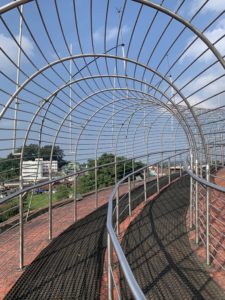 A structure with adequate lighting and environmentally conscious at that too, with sensory switches that turn on with footfall section by section. Also, shielding the sculptures and depictions are seamless glass compartments to house the artefacts that is maintained in terms of cleanliness and sanitation making it easy for one to glance at the various exhibits without much ado. With a friendly guide escorting and briefing visitors, to usage of artefacts of preserved remnants of archival heritage and value, supported by video aid in each floor, DBCIC undoubtably makes for one of the finest museums fit to compete with even those in the national capital.
A structure with adequate lighting and environmentally conscious at that too, with sensory switches that turn on with footfall section by section. Also, shielding the sculptures and depictions are seamless glass compartments to house the artefacts that is maintained in terms of cleanliness and sanitation making it easy for one to glance at the various exhibits without much ado. With a friendly guide escorting and briefing visitors, to usage of artefacts of preserved remnants of archival heritage and value, supported by video aid in each floor, DBCIC undoubtably makes for one of the finest museums fit to compete with even those in the national capital.
To paint a wholistic picture of the experience at the premises, Sunday Shillong interviewed some of the visitors. Sukanya Dutta, a tourist and resident of Kolkata said, “I’ve heard so much about DBCIC that I’ve been longing to visit this place for a while now. When I read about tourism opening up in Meghalaya, I made it here primarily for my children. I want them to learn about the diversity in cultures all across India. I would recommend a visit at least once.”
Another visitor, Alumla S Longkumer observed, “It’s my second visit to this place since the pandemic. As a researcher on tribal art, sculpture and shifts in patterns of modernity, I do think this museum has captured the essence well.”
Cafeteria in-charge, Hilarius Warjri observes, “Since the past week (Durga Puja holidays) onwards visitors’ count has been increasing. I’ve been working here since 2009, and I believe 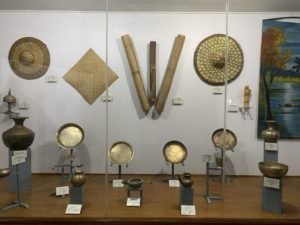 that all sections are important for viewership.”
that all sections are important for viewership.”
Another staff member at DBCIC, Sankirose Diengdoh shares, “I’ve been working for the last 8 months and as a new employee here, I like the neighbours gallery because I learned about the countries neighbouring us. There has been less footfall because of the pandemic, but ever since tourism has opened up in the state, we’re happy to come back to work and be around people. Tourism opening is a blessing.”
On being interviewed, Director, DBCIC Denis Lalfela shares, “Don Bosco Museum is the best Cultural museum in Asia. It is a private institution run by the Salesians of Don Bosco (Don Bosco). It is unique as the visitors can see the cultures of the entire Northeast India under one roof in this museum. This museum has a skywalk, from which the visitors can view the city of Shillong in all directions. This museum has seven floors with easily accessible 19 galleries makes this museum unique in every-way. Don Bosco Museum is one the most popular and 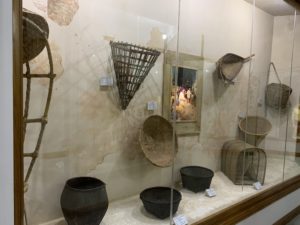 well maintained tourist spots in Shillong with about one lakh and forty thousand visitors per year.
well maintained tourist spots in Shillong with about one lakh and forty thousand visitors per year. 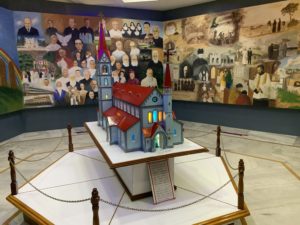
He further adds, “People must know the importance of preserving cultures. Don Bosco Museum serves as a research centre on various cultures and a place to preserve cultures of Northeast India.”
Apart from being a sightseer’s fancy, the museum can also been seen as a surmountable platform for innovation in pedagogy, making for a sight of educational tours. Surely then, the visit can safely be summed up as – informative, educative and delightful!



